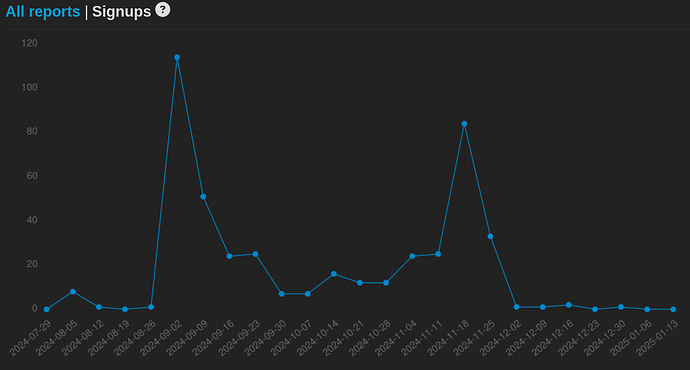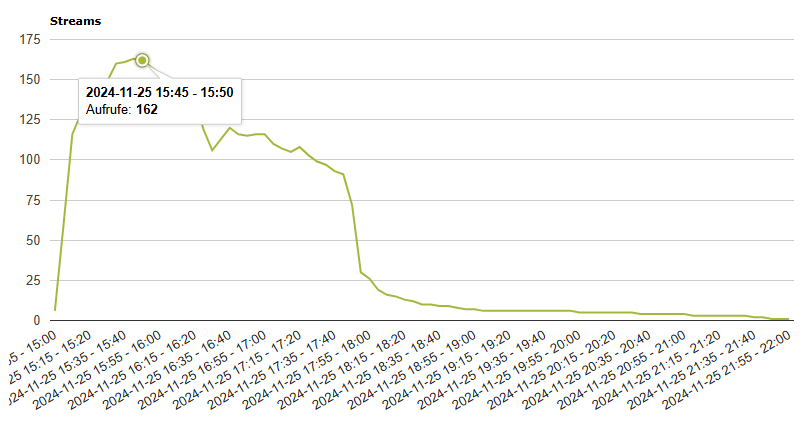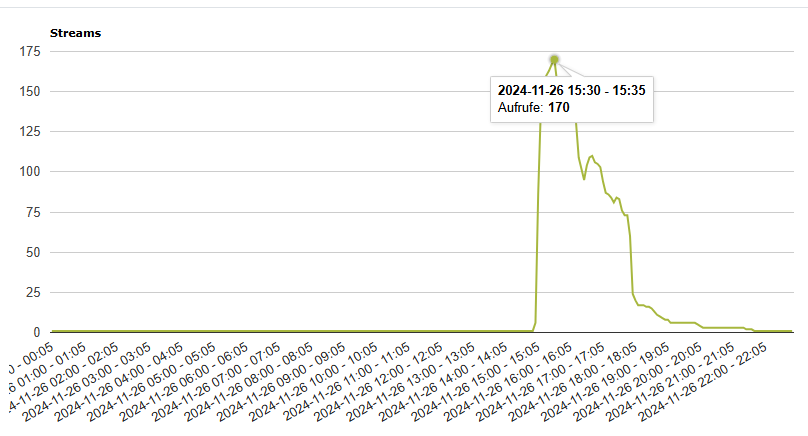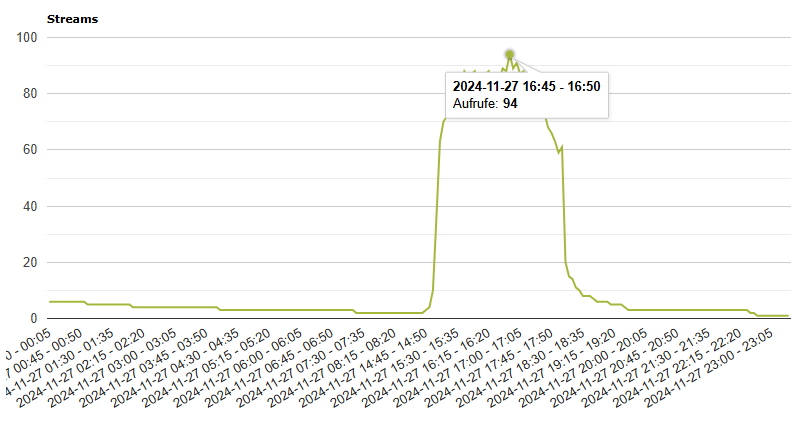SWIB24 took place from November 25th to 27th. The recordings and slides to nearly all Talks@SWIB24 can be found in the forum or in the collection of SWIB24 recordings at TIB AV portal.
It was a memorable SWIB, kicking off with a great keynote by @Denny on Large Language Models, Wikidata, Wikifunctions, libraries and librarians and how all this could work together to build a world where everyone can share in the sum of all knowledge, which was followed by a range of equally great informative talks and flanked by seven instructive Workshops@SWIB24 given by highly motivated facilitators from the community.
In the following, we will be sharing some SWIB24 numbers and lessons learned.
Forum and registrations
We have been using this forum – based on the popular Discourse open source software – for the first time in order to run a SWIB conference. In total, more than 450 people have signed up to the forum which exceeded our expectations! There were two spikes for signups, one in September when we published the programme and announced it on different channels and another one mid-November when we sent reminders to different mailing lists.
So, we had lots of signups, but how was the forum actually used by those who had signed up?
- 69 registered users have a read time of under one minute, thus, basically did not much more than signing up.
- 364 registered users have read at least two posts, 243 have read more than five and 152 registered users have read more than ten posts
- 74 people have posted at least once
- 52 people have at least once reacted to a post
Thus, a fair number of people have used the forum at least to some extent but there is definitely room for improvement with regard to forum interaction in upcoming SWIBs.
Forum chat
For immediate communication during the conference we activated the chat function in Discourse. Unfortunately, due to a chain of two technical problems, it was not before the last conference day that all forum members could actually see and comfortably use the chat. This resulted in less chat activity compared to previous online SWIBs. However, we now know that the Discourse chat works fine for our purpose and that by now we have an ideal setup for SWIB25 so that nothing will stand in the way of direct interaction next time!
Live stream
The main conference was broadcast via a live stream embedded in the conference homepage. The maximum number of concurrent views was 170. As we collect only the bare minimum of data, we do not have a number of unique viewers but we assume that 300–500 people have at some point tuned in to the SWIB live stream.
Here is a breakdown of concurrent views over the course of the three conference days:
Monday
Tuesday
Wednesday
Post-conference survey
As every year, we asked SWIB participants to fill out a survey after the conference had ended. We decided to use the Discourse poll option for this so that the results would immediately be available to the whole community: SWIB24 post-conference survey
We can be quite happy with the feedback received. Unfortunately, the turnout for the survey was less than half compared to the previous online SWIBs although all registered users should have received an email reminder via the forum.
Lessons learned
SWIB24 was really exciting for us considering the several major changes that we implemented, especially the use of this forum and providing different time slots for workshops. It required us to learn a lot of new things in a short amount of time since we could not rely on routine for those tasks.
Here are some things we have learned during SWIB24:
- The forum software is a very powerful tool but simultaneously makes the forum at some points unintuitive and hard to use. To get more participants to engage in a lively interaction on the forum, we will have to figure out ways to make it easier to use the forum and to make oneself familiar with the core concepts.
- We only had three lightning talks. Next time we should open the lightning talk submission some time before the conference (maybe in conjunction with a “present yourself” in the forum) and address people directly who seem to do interesting things. Also, some early introduction into the process (forum etc.) would lower the hurdles for a lightning talk submission.
- We were afraid of a high no-show rate when using the forum for workshop registration (see Moving SWIB communications to a Discourse forum: motivation, plans & challenges). Overall, it turned out fine with a no-show rate of one third for most workshops. (The Annif workshop had a no-show rate of two thirds which is probably due to the flipped classroom approach which requires people to actually invest some hours for preparation before the workshop.)
- We have learned that SWIB speakers are not easily fazed – not even by their local venue closing and them having to pack up their stuff and leave while continuing to give their talk; this (involuntarily) led to the establishment of a new format by @airobert in his presentation Examining LGBTQ+-related concepts and their links in the Semantic Web: “walk & talk”, which was an instant hit!
- We also learned that you can have fun in an on-site face-to-face event even when SWIB itself is virtual – read more about the metadata BarCamp including pub visit at Metadaten-BarCamp, an in-person SWIB24 node in Cologne, Germany - #2 by acka47 and be inspired to organize such an event yourself!
After SWIB is before SWIB
With this look back we would like to leave you and start looking forward – to SWIB25! We will start preparations shortly and take these lessons learned into account in order to make sure that this year’s conference runs smoothly and will be an enlightening and pleasant experience for all SWIB community members alike, from newbies to seasoned veterans. See you there!



